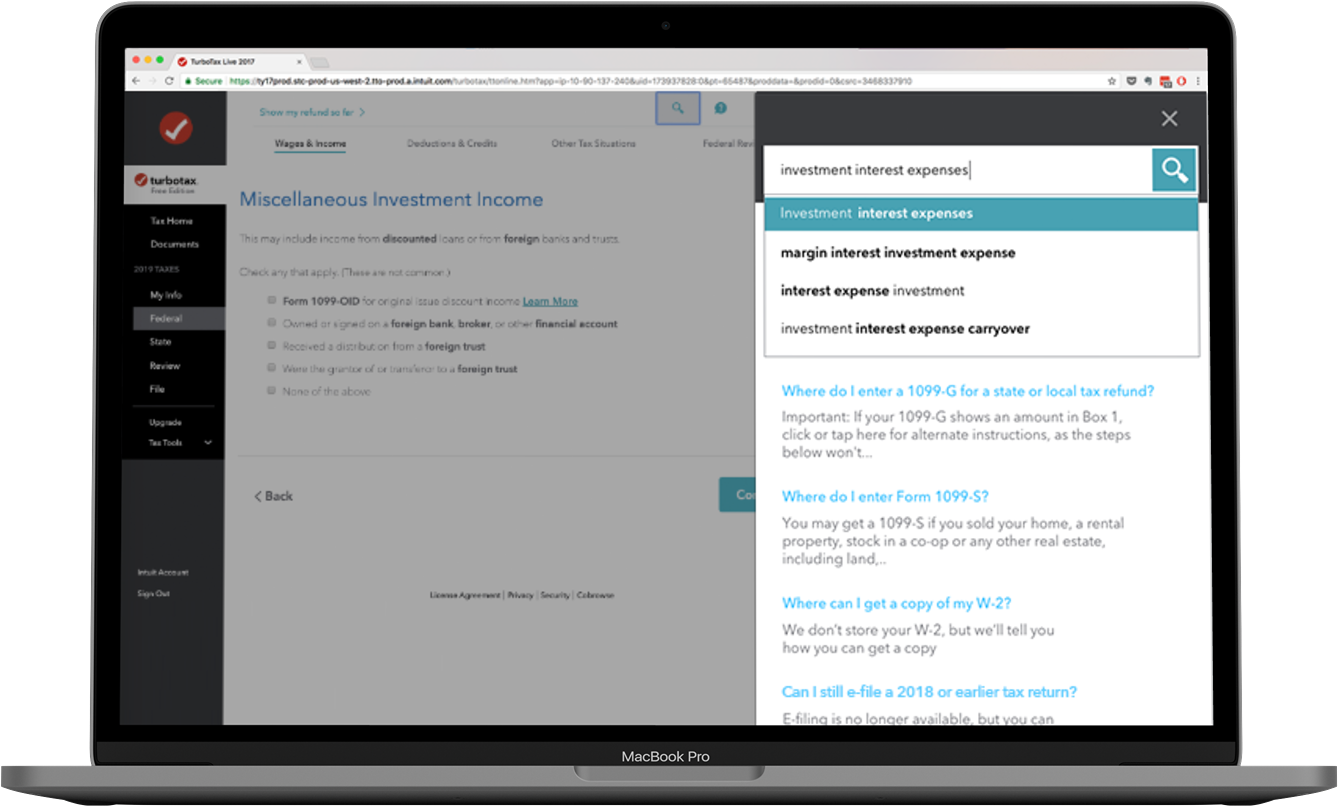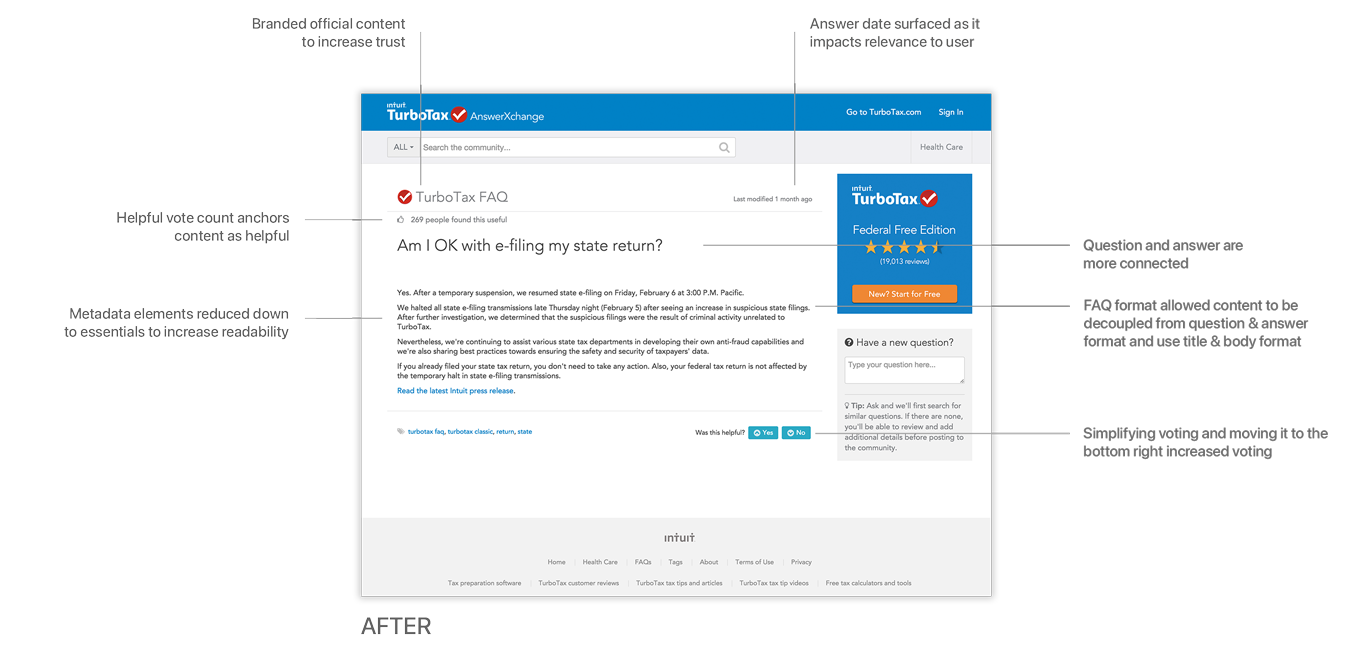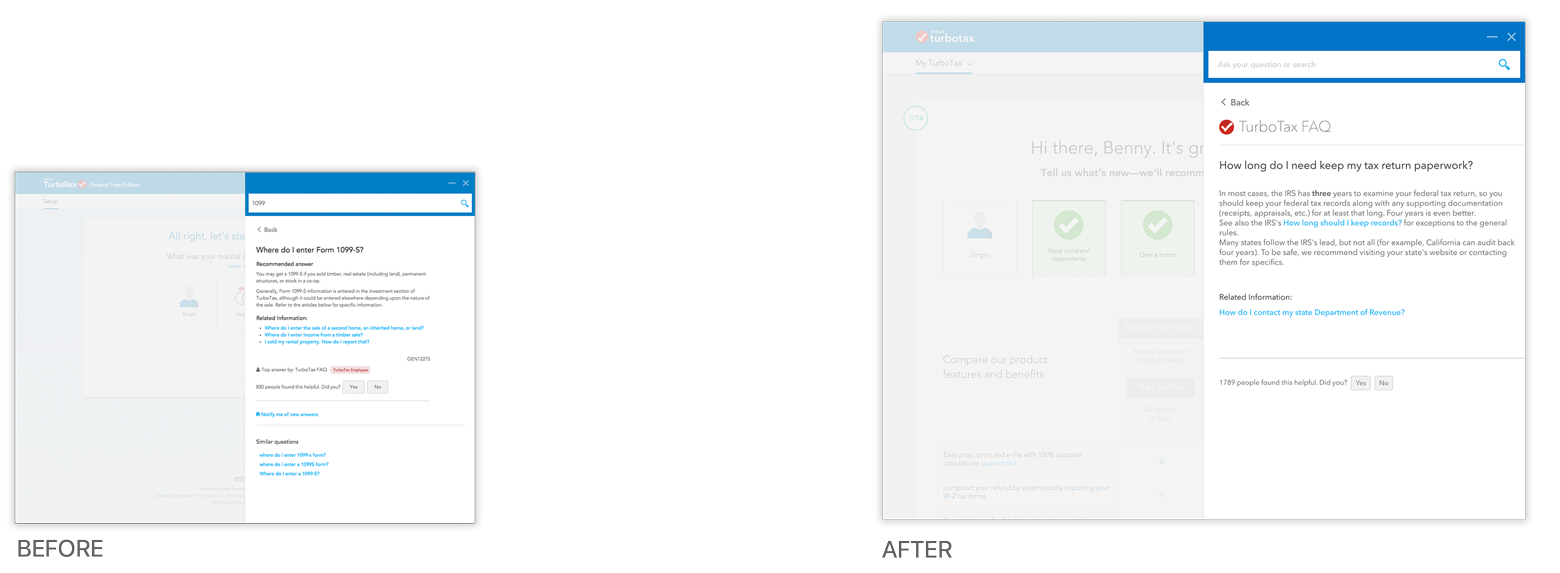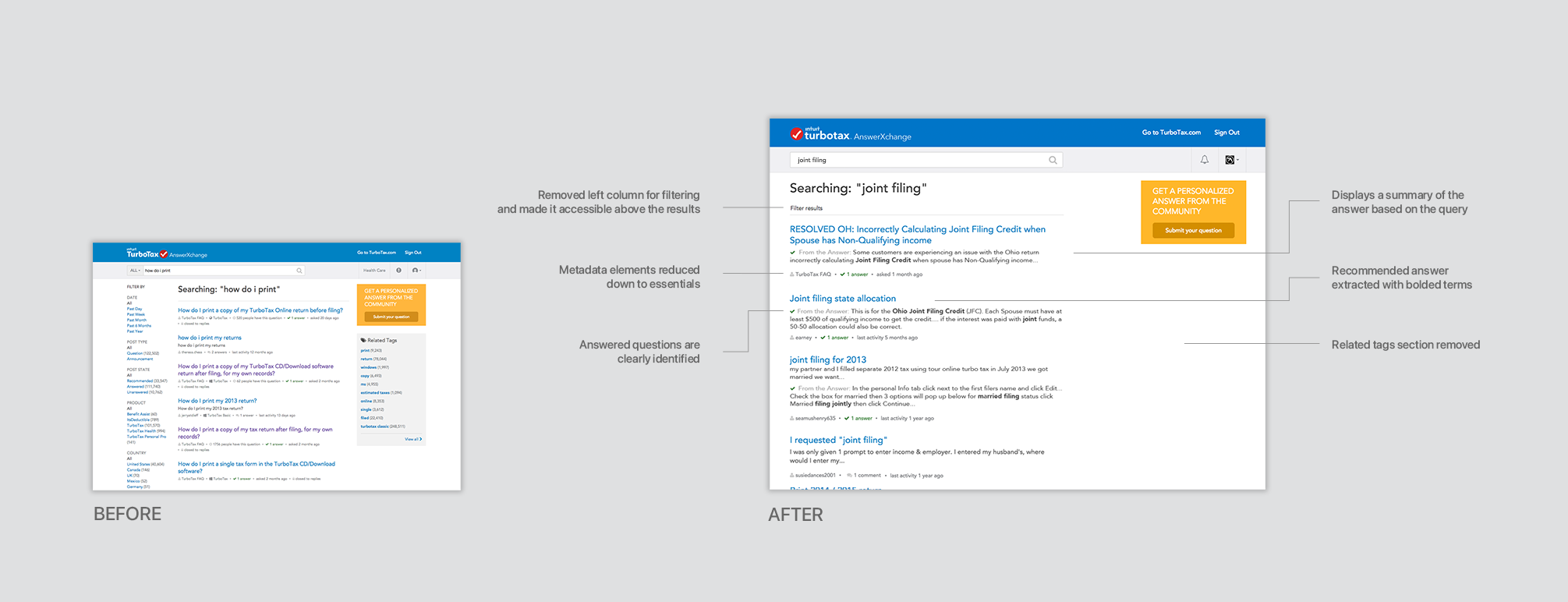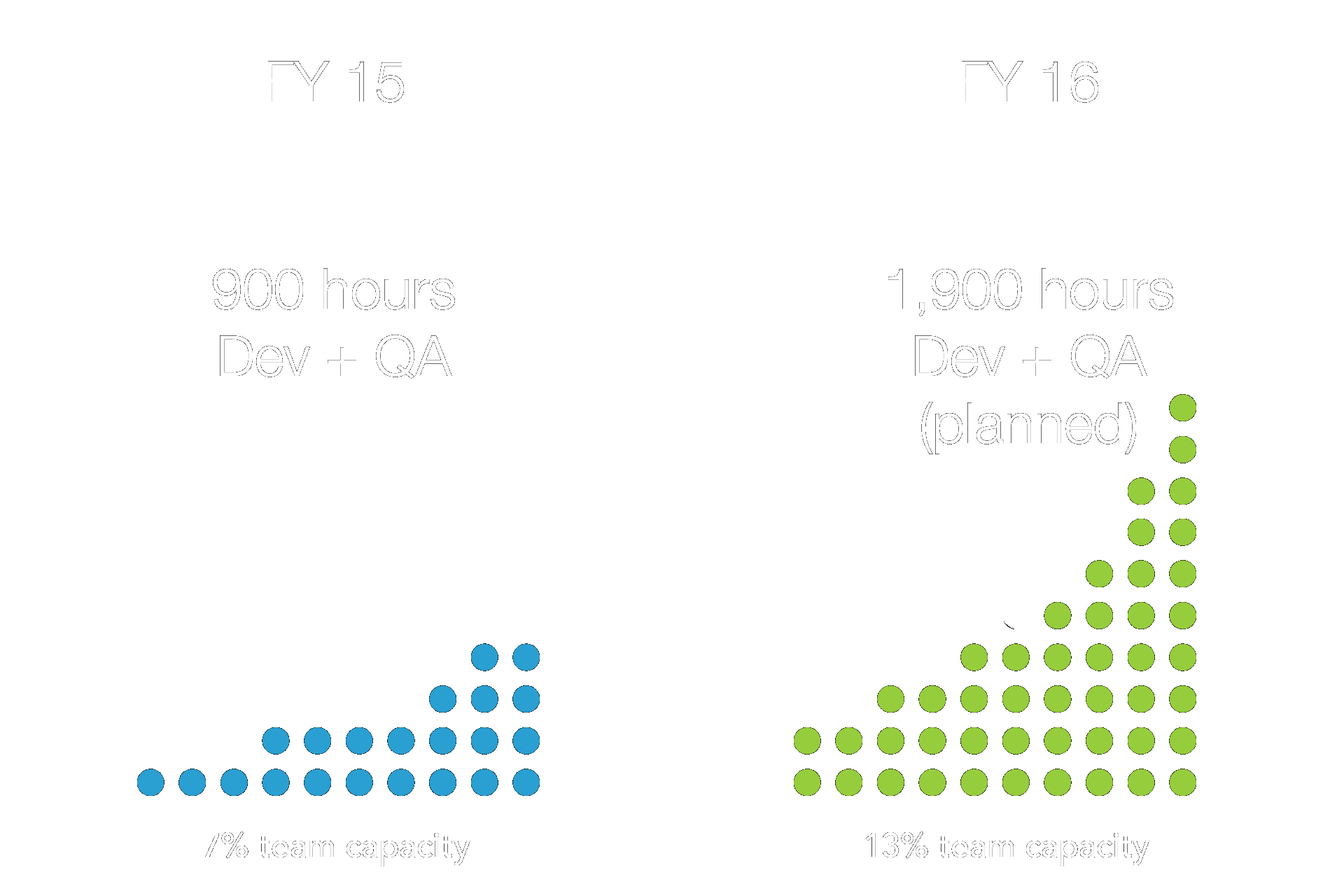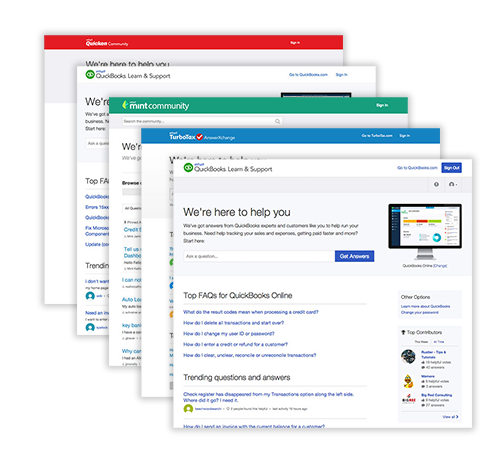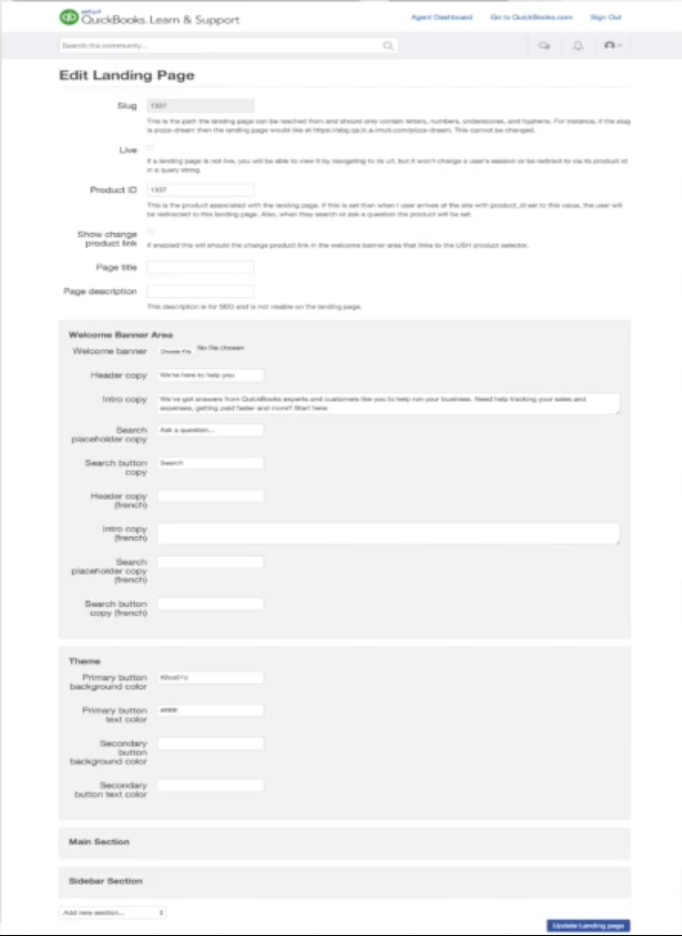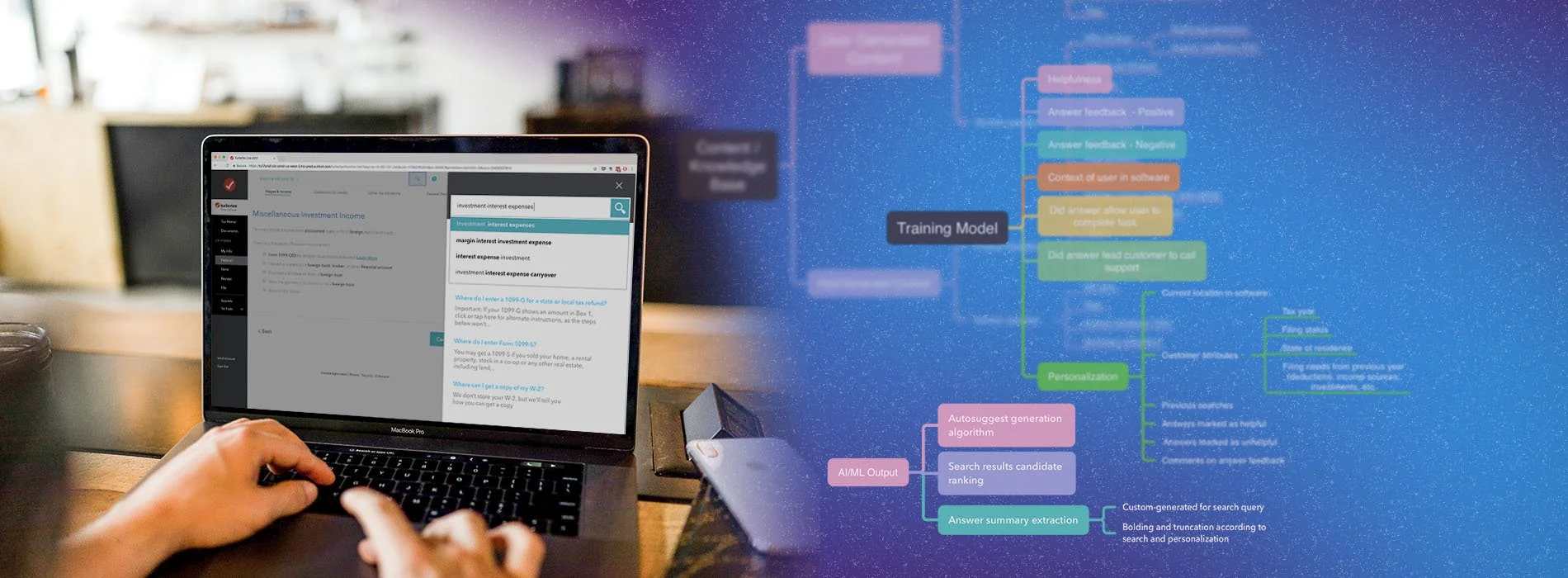Intuit Help System redesign
Multi-year redesign of the Intuit Help platform enabled greater customer satisfaction and issue resolution while scaling up the platform features to support more product help sites.
The Intuit Help system is the platform that serves millions of customers every year, allowing them to find answers to their TurboTax, QuickBooks, or other product questions. Unlike other customer support sites, this platform is a custom-built question and answer community and is accessible from within Intuit products as well as many highly-trafficked sites that are often the top hit when searching for answers on tax topics or QuickBooks questions.
Problem
The Intuit help system had been a custom-built question and answer community. This solution proved to be powerful and effective at helping millions of customers every year. As the platform grew and it was adopted by more product teams, the deficits in the experience and features became more of a concern.
Some of the issues that I identified:
Search was difficult for customers unfamiliar with tax and accounting. “How do I explain this question?”
Analyzing search results was burdensome and slowed down finding a solution. “Does this answer relate to me? Who wrote this answer?”
Reading answers was difficult and it wasn’t easy to identify the difference between official and community content. “Can I trust this answer? Can I trust this site?”
As more products adopted the platform, the dev team was spending more time customizing new landing pages and communities. We would soon be running out of resources if this wasn’t addressed.
Finally, If customers couldn’t solve their issue, they would call customer service, which could be inefficient and costly for customers and Intuit.
I developed an ongoing process of auditing the current platform, analyzing data and metrics, as well as regular user research to define current issues, feature gaps, then assigned scores for priority and scope.
Intuit’s help platform supports the content and community behind the help that is integrated into TurboTax, QuickBooks and other Intuit products.
Customer insights
User research was an essential part of my process and often produced a bounty of actionable insights. Getting exposure to a wide variety of customers of TurboTax and QuickBooks always proved worthwhile. To get the most accurate representation of our customer’s experience, I conducted user-intercept studies that connected with them while they were using the help system to solve their real question.
If our customers aren’t able to get their issues resolved, then they often call our support agents. To learn more about the support agent experience I visited the Intuit call center in Tucson, AZ to gain even more insight on how agents resolve user questions.
I used a variety of user research methods to understand the gamut of customer problems. The most common testing was User-Intercept testing (left) that allows for interviewing users while using the product. Another insightful but lesser used method was Eye-tracking studies (right) which exposed how customers read and analyze search results and help content.
Here is a small sampling of some of the insights we gained:
Customers called support so they could talk through their question. They didn’t know how to explain it in a way that they could enter into a search box.
Customers didn’t know what other information was relevant or irrelevant to their question
When looking at a list of search results, most had trouble identifying which question and answer pair would be most useful.
Customers had difficulty determining whether the answer could be trusted.
Some customers preferred content authored by Intuit, while others preferred community answered questions. The same customer might also change preference depending on the topic
While in the product, customers expected that TurboTax would only suggest answers that related to their tax data. A California tax filer would not expect to see answers related to New York state topics.
Solution
While I identified dozens of feature improvements and released a vast array of my designs, I’ll highlight some of the more impactful work.
Answer Page
Goals
Make it easier to read the content by separating the signal from the noise
Differentiate official Intuit content from community answers
Solution
Redesign the answer page into 2 distinct but related designs: an FAQ format and a community Q&A format
Answer Page: FAQ Web Template
Answer Page: FAQ Template in TurboTax product
Search and search results
Goals
Helping customers form better queries will give better results and faster issue resolution
Reduce cognitive load of analyzing search results and make it easier to read
Solution
Introduce AI-powered autosuggest in search
Cleaned up the search results page by removing low-value features and metadata
Modular Self-Help landing page builder
Goals
Design a solution that allows for product and community managers to easily create and edit their own landing pages without the need for engineering resources.
Solution
I designed a self-service landing page builder that allowed non-engineers to launch and edit their product’s help community home. Through user research, I determined that this solution needed to support more than just our current feature set, we needed to support a better way to browse, onboard users and even support users shopping for a product. So this meant that it needed to be modular to allow for future use cases
My objectives were to:
Make it Configurable
Make it Scalable
Empower teams
Outcome
Removed dev bottleneck for changes to content
New browse module test released
240 dev hours saved in just 3 sprints
In 2015 we spent 900 dev and QA hours building and maintaining landing pages and if we didn’t provide a solution we would have had over 1900 hours in 2016 booked for configuring new landing pages.
A small sample of the type of landing pages that needed to be supported
Every product’s self-help site has a main landing page that serves as the home for self-help. Customers can access these from Q&A pages, sometimes from in-product, as well as from marketing and organic search. Through user research, we determined that we needed to support more than just our current feature set, we needed to support a better way to browse, onboard users and even support users shopping for a product. Creating a landing page is the first step in creating a new community, which is especially important to support Intuit’s global expansion.
This landing page editor allowed for an easy way to edit a community’s landing page
2 weeks to 10 minutes
The page on the left was developed in 2 weeks using engineering and QA resources
This page on the right was developed in 10 minutes by a product manager using the modular landing page builder that I designed.
Outcome
The redesigned FAQ template produced a 6% increase in helpfulness and a 75% increase in votes.
New answer page design addressed 12 customer issues from the XD debt list and increased helpfulness rating by 10%. This design was also used for the Turbo Tax product help section, allowing for a consistent experience. Customers had an easier time finding the answer as was found in user research.
Improvement in the search experience with features such as summary extraction (5% reduction in contacts), related searches (4% reduction in contacts), and collapsed filters (made results easier to read)
Configurable browse screens allowed QuickBooks customers to more easily find important content and was deemed a significant success with 40-50% click through rates on articles.
New Contributor landing page test successfully converted more users into contributors. The new design improved engagement 20%, doubling answer rate without decreasing quality.
Developed a strategy for targeted ads on TurboTax’s Help website that increased revenue from $14M to $17.5 YOY
The self-help landing page builder removed the dev bottleneck for our community managers, saved us 240 hours of dev resources in 3 sprints and was projected to save over 1900 hours in one year.
More Case Studies
Financial Data Sharing for Couples
AI-Driven Search

